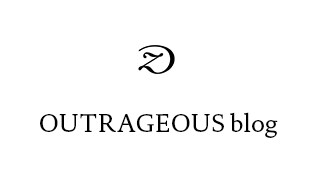 |
| Karl Hans Janke, Knabenbildnis, 1963, mixed media on paper, 29,5 x 21 cm |
LIBIDINAL MOTION / DIARY OF AN INNOCENT
November 24th, 2018 – February 1st, 2019
30 years of Delmes & Zander
Curated by James Richards
Spending time at Delmes & Zander, James Richards* has convened an intimate path through thirty years of the gallery’s program. Choosing works from the gallery’s archives by Aurel Iselstöger, Miroslav Tichý, Sava Sekulic and Karl Hans Janke, to mention a few, the selection is intuitive and as- sociative. There is a focus on drawing and works on paper as a form of direct communication.There is a focus on drawing and works on paper as a form of direct communication. Tolia Astakhishvili* provides the architectural framework for the exhibition. The work who goes there acts as both display structure and atmospheric holding enviroment. Gallery walls are lined with unfinished wood pannels, post boxes and dirty perspex and graffty on top of which the artist mounts drawings and found images.
This playfull mixing of background texture and foreground display opens up new interpretive pos- sibilities as well as blurring the boundaries between installation and artwork.
 |
| Albrecht Becker, ohne Titel, 1974, photo collage, 28,4 x 20,4 cm, Copyright Collection Hervé Joseph Lebrun
|
Albrecht Becker – Libidinal MOTION
Curated by Lucas Foletto Celinski
Albrecht Becker (1906 – 2002), best known as a successful set designer and film architect (
Hauptmann von Köpenick, Das Glas Wasser) and for his controversial biography – he was imprisoned by the Nazis under paragraph 175 – has also created an extensive artistic body of work.
The exhibition A
LBRECHT BECKER – Libidinal MOTION, curated by Lucas Foletto Celinski*, will focus on the photomontage self-portraits Becker made in later years. His experimental photographic images, constructed through a range of diverse techniques, such as multiple-exposure, mirror reflection and collage, combine the depiction of motion with body-related self-explorations. Capturing separate instants of action in one static image, his photomontages render the impression of movement, bringing to mind Eadweard Muybridge's photographic studies of motion.
The exhibition provides insight into Becker's body explorations and a queer take on body and movement. A pioneer of body modification, Becker's photomontages situate his body as a site for mutable and constant transformation. Becker's staged “body-play” transcends the boundaries of still and motion, natural and artificial, private and public. They render testimony to an auto-erotic obsession.
As part of a research project at the Schwules Museum Berlin, James Richards has previously worked with Becker's photomontages in his collaborative film with Steve Reinke:
What Weakens The Flesh is The Flesh Itself (2017). Thanks to Rosa von Praunheim for the permission to show the documentary film
Love and Torment – Albrecht Becker (2005) in the context of the exhibition.
The exhibition takes place with the friendly support of Collection Hervé Joseph Lebrun.
30 years of Delmes & Zander
We are happy to celebrate our 30th gallery anniversary with the two shows Libidinal MOTION/ Diary of An Innocent curated at our exhibition space by the artists James Richards and Lucas Foletto Celinski respectively.
The orientation of the gallery program remains in a constant dynamic process freed from the dictates of genre and the idea of the artwork as a finished product, thus exploring new directions and opening up new fields of experimentation.
*James Richards (born 1983 in Cardiff, UK) lives and works in Berlin and London. He is the recipient of the Ars Viva Prize (2014) and Derek Jarman Award for film and video (2012) and was a resident of the Berliner Künstlerprogramm DAAD (2013). Richards was shortlisted for the 2014 Turner Prize. Recent solo shows include Künstlerhaus Stuttgart (2018), Kestner Gesellschaft, Hannover (2017), ICA, London (2016), Bergen Kunsthall (2016), Kunstverein München (2015), CCA, Kitakyushu (2012), Chisenhale Gallery, London (2011) and Tate Britain, London (2010). In 2017 Richards represented Wales at the 57th Venice Biennale. Selected group exhibitions include Whitney Biennial, Whitney Museum of American Art, N.Y. (2017), Less Than Zero, Walker Arts Center, Minneapolis (2016), Cut to Swipe, MoMA, N.Y. (2014), Frozen Lakes, Artist Space N.Y. (2013) and The Encyclopedic Palace, 55th International Art Exhibition La Biennale di Venezia, Venice (2013).
*Lucas Foletto Celinski (born 1986 in Brazil) lives and works in Berlin. Recent shows include Suture Pénétrable at Standing Pine Gallery, Nagoya (2017), Passion at Museum Ludwig, Budapest (2016), Slash: In Between the Normative and the Fantasy at Kim? Contemporary Art Centre, Riga (2015), Berlin Artists' Statements at BWA Contemporary Art Gallery, Katowice (2015) and Bedded-Down Knot at Künstlerhaus Bethanien, Berlin (2015).
*Tolia Astakhishvili (born 1974 in Tbilisi, Georgia) lives and works in Berlin.
International group and solo shows include New Contemporaries, Camden Arts Centre, London (2001), Mots in all eyes, The Ship Projects, London (2005), The Universal Enemy, Kunstgruppe, Cologne (2005), Passenger, GlassBox, Paris (2008), 2009 Born in Georgia, Cobra Museum, Amstelveen, Alms for the Birds at Cabinet Gallery, London (2014), A slight ache, chapter Gallery (curated by James Richards), Cardiff (2018) Ache, Cabinet Gallery, (curated by James Richards), London. Since 2018 the artist teaches at Udk, Universität der Künste Berlin.














